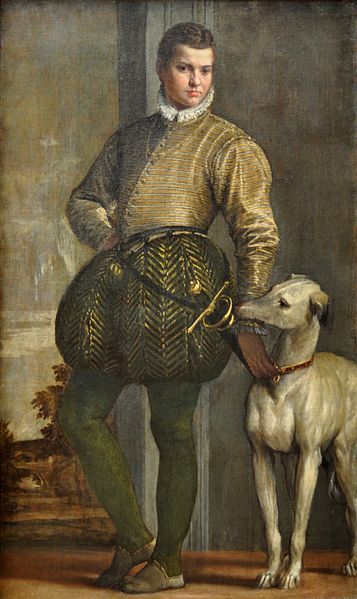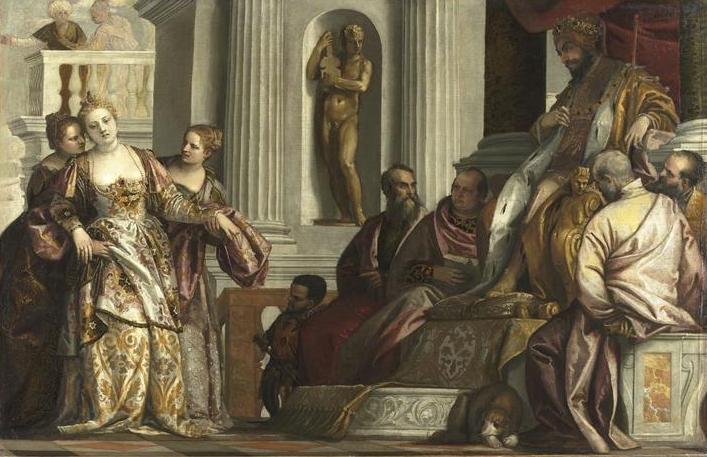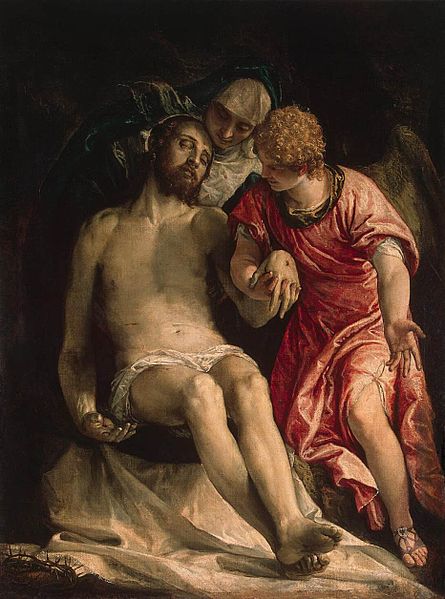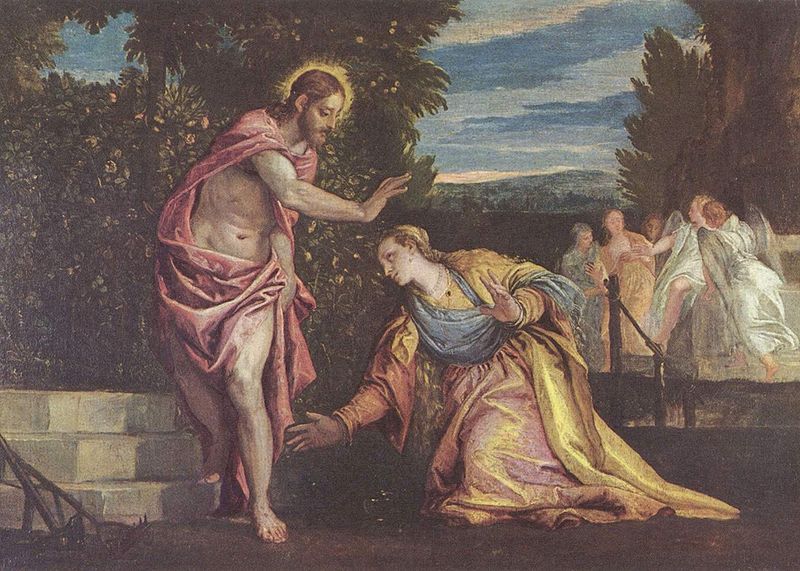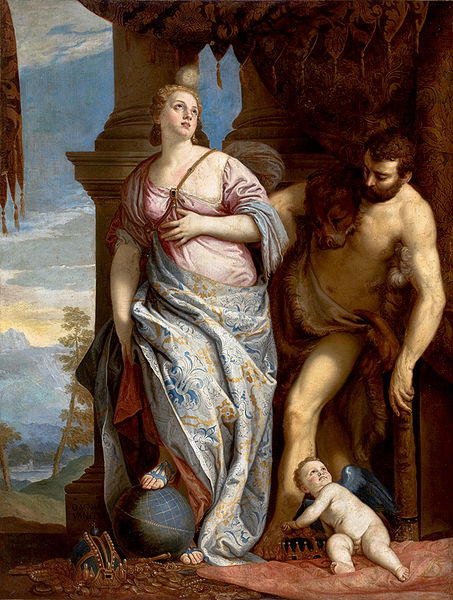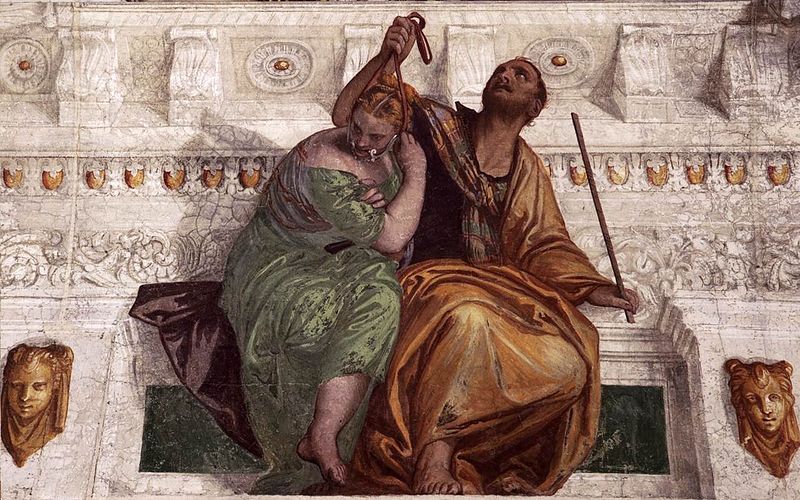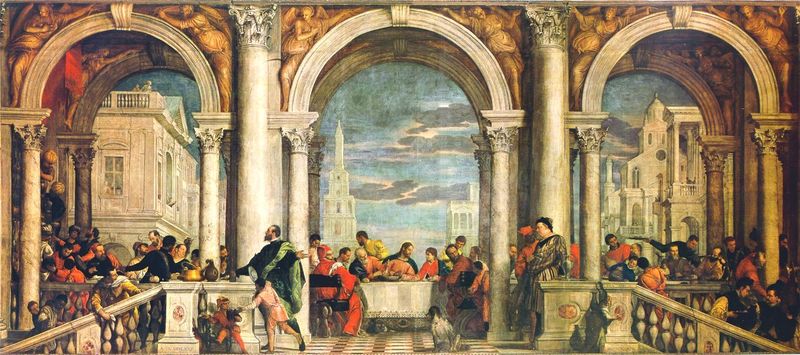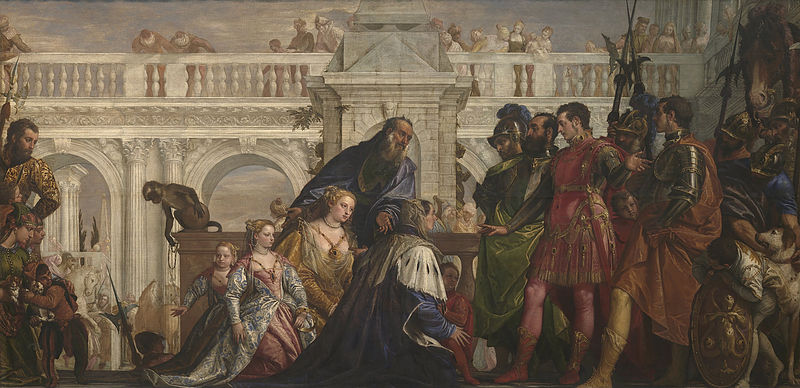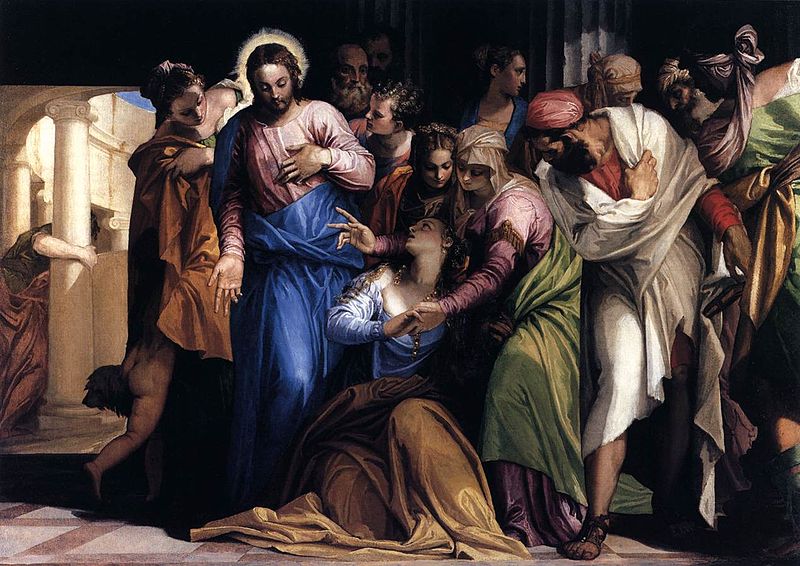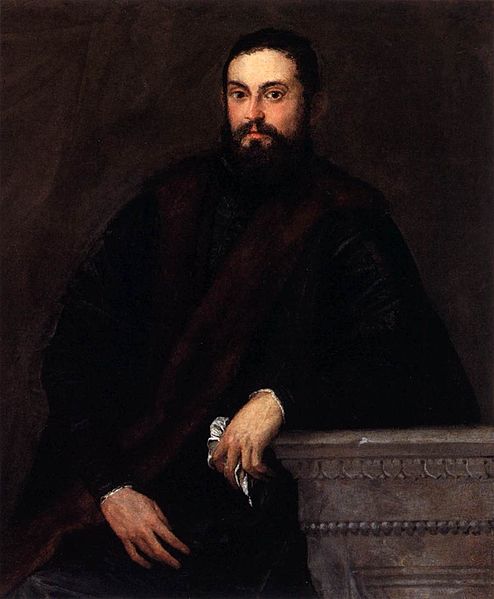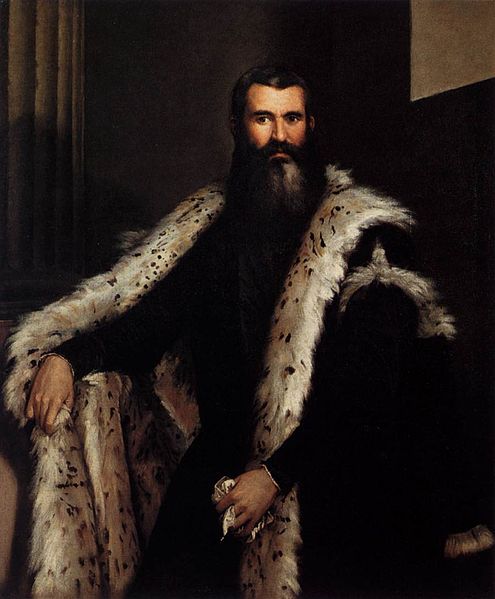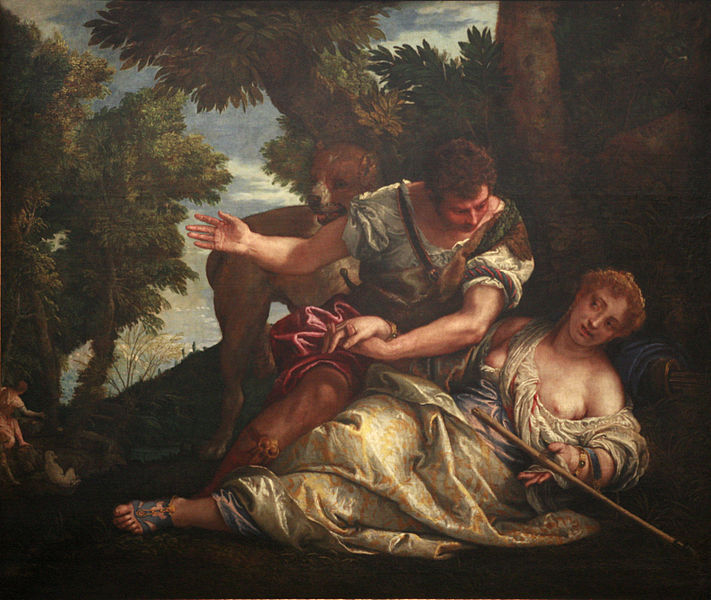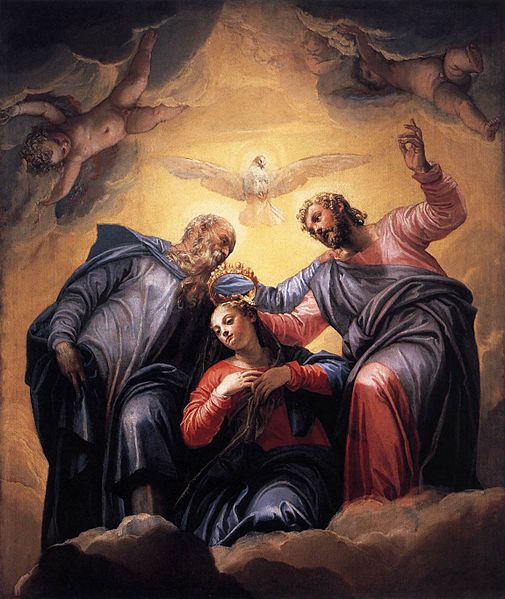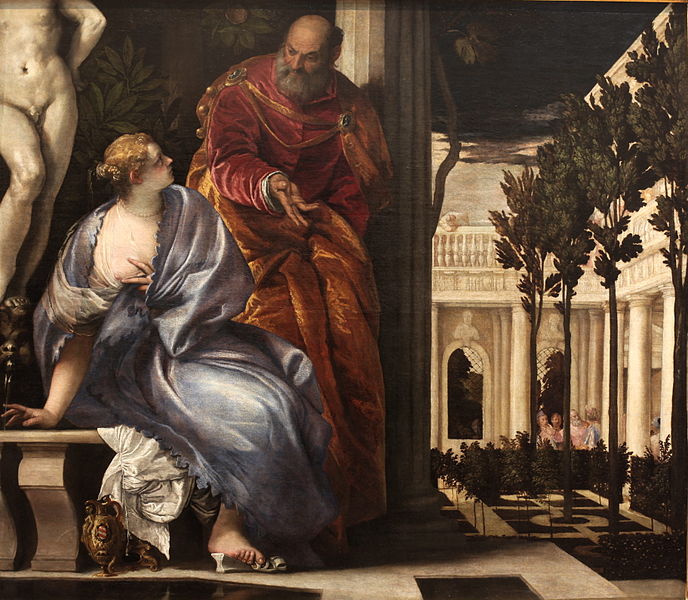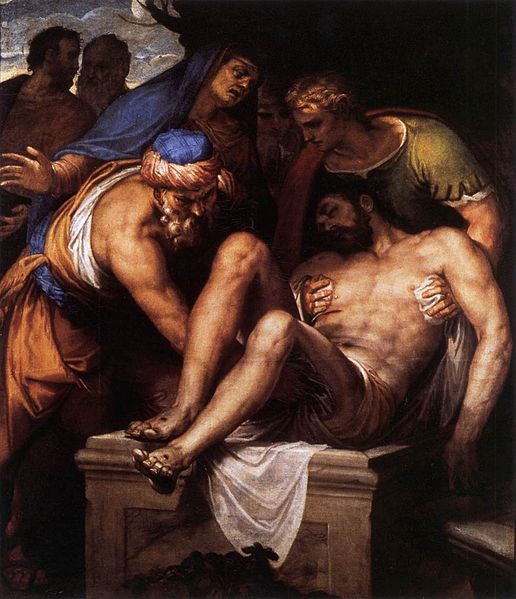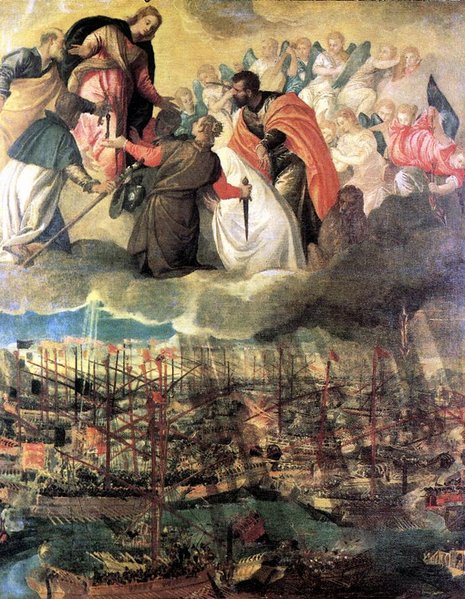<Back to Index>
- Ethnographer Vasily Nikitich Tatishchev, 1686
- Painter Paolo Veronese, 1528
- Prime Minister of Belgium Wilfried Achiel Emma Martens, 1936
PAGE SPONSOR
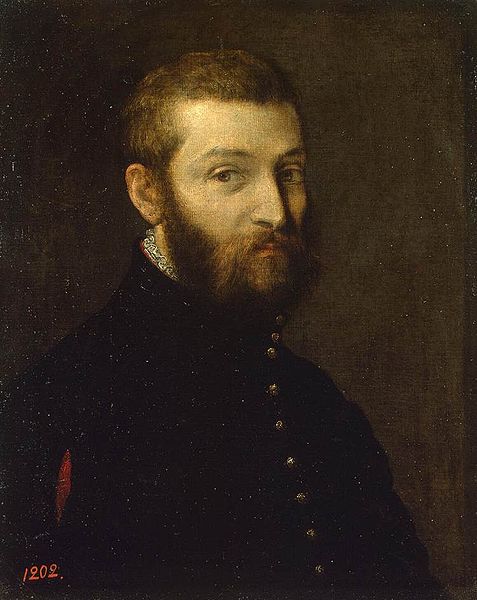
Paolo Veronese (1528 – April 19, 1588) was an Italian painter of the Renaissance in Venice, famous for paintings such as The Wedding at Cana and The Feast in the House of Levi. He adopted the name Paolo Cagliari or Paolo Caliari, and became known as "Veronese" from his birthplace in Verona.
Veronese, Titian, and Tintoretto constitute the triumvirate of pre-eminent Venetian painters of the late Renaissance (16th century). Veronese is known as a supreme colorist, and for his illusionistic decorations in both fresco and oil. His most famous works are elaborate narrative cycles, executed in a dramatic and colorful Mannerist style, full of majestic architectural settings and glittering pageantry. His large paintings of biblical feasts executed for the refectories of monasteries in Venice and Verona are especially notable. His brief testimony with the Inquisition is often quoted for its insight into contemporary painting technique.
The census in Verona attests that Veronese was born some time in 1528 to a stonecutter named Gabriele, and his wife Catherina. By the age of fourteen Veronese apprenticed with the local master Antonio Badile, and perhaps with Giovanni Francesco Caroto. An altarpiece painted by Badile in 1543 includes striking passages that were most likely the work of his fifteen year old apprentice; Veronese's precocious gifts soon surpassed the level of the workshop, and by 1544 he was no longer residing with Badile. Though trained in the culture of Mannerism then popular in Parma, he soon developed his own preference for a more radiant palette.
He then moved briefly to
Mantua in 1548 (where he created frescoes in that city's Duomo) before arriving in Venice in 1553. His first Venetian commission was a Sacra Conversazione from San Francesco della Vigna (c.1552). In 1553, he obtained his first state commission, the fresco decoration of the Sala dei Cosiglio dei Dieci (the Hall of the Council of Ten) and the adjoining Sala dei Tre Capi del Consiglio. He then painted a History of Esther in the ceiling for the church of San Sebastiano. It was his ceiling paintings for San Sebastiano, the Doge's Palace, and the Marciana Library, (the last for which Titian awarded him a prize), that established him as a master among his Venetian contemporaries. Already these works indicate Veronese's mastery for referencing both the subtle foreshortening of the figures of Correggio and the heroism of those by Michelangelo.
The Wedding at Cana, painted in 1562 – 1563, was also a collaboration with Palladio. It was commissioned by the Benedictine monks for the San Giorgio Maggiore Monastery,on a small island across from Saint Mark's, in Venice. The contract insisted on the huge size (to cover 66 square meters), and that the quality of pigment and colors should be of premium quality. For example, the contract specified that the blues should contain the precious mineral lapis - lazuli. The contract also specified that the painting should include as many figures as possible. There are three hundred portraits (including portraits of Titian, Tintoretto, and Veronese himself) staged upon a canvas surface nearly ten metres wide. The scene, taken from the New Testament Book of John, II, 1–11, represents the first miracle performed by Jesus, the making of wine from water, at a marriage in Cana, Galilee. The foreground celebration, a frieze of figures painted in the most shimmering finery, is flanked by two sets of stairs leading back to a terrace, Roman colonnades, and a brilliant sky.
In the refectory paintings, as in The Family of Darius before Alexander (1565 – 1570), Veronese arranged the architecture to run mostly parallel to the picture plane, accentuating the processional character of the composition. The artist's decorative genius was to recognize that dramatic perspectival effects would have been tiresome in a living room or chapel, and that the narrative of the picture could best be absorbed as a colorful diversion. These paintings offer little in the representation of emotion; rather, they illustrate the carefully composed movement of their subjects along a primarily horizontal axis. Most of all they are about the incandescence of light and color. The exaltation of such visual effects may have been a reflection of the artist's personal well being, for in 1565 Veronese married Elena Badile, the daughter of his first master, and by whom he would eventually have four sons and a daughter.
In 1573 Veronese completed the painting which is now known as the Feast in the House of Levi for the rear wall of the refectory of the Basilica di Santi Giovanni e Paolo. The painting was originally intended as a depiction of the Last Supper, designed to replace a canvas by Titian that had been lost in a fire. It measured more than five metres high and over twelve metres wide, depicted another Venetian celebration and was a culmination of his banquet scenes, which this time included not only the Last Supper, but also German soldiers, comic dwarves, and a variety of animals; in short, the exotica which were standard to his narratives. Even as Veronese's use of color attained greater intensity and luminosity, his attention to narrative, human sentiment, and a more subtle and meaningful physical interplay between his figures became evident.
That the subject was indeed a Last Supper, and then some, was not lost on the Inquisition. A decade earlier the monks who commissioned the Wedding at Cana had requested that the artist squeeze the maximum number of figures into the painting, but the Counter - Reformation had since exerted its influence in Venice, and in July of 1573 Veronese was summoned to explain the inclusion of extraneous and indecorous details in the painting.
The tone of the hearing itself was cautionary rather than punitive; Veronese explained that "we painters take the same liberties as poets and madmen", and rather than repaint the picture, he simply and pragmatically retitled it to the less sacramental version by which it is known today.
In addition to the ceiling creations and wall paintings, Veronese also produced altarpieces (The Consecration of Saint Nicholas, 1561 – 2, London's National Gallery), paintings on mythological subjects (Venus and Mars, 1578, New York Metropolitan Museum of Art), and portraits (Portrait of a Lady, 1555, Louvre). A significant number of compositional sketches in pen, ink and wash, figure studies in chalk, and chiaroscuro modelli and ricordi are in circulation. Veronese was one of the first painters whose drawings were sought by collectors during his lifetime.
He headed a family workshop, including his brother Benedetto, sons Carlo and Gabriele, that remained active after his death in Venice in 1588. Among his pupils were his contemporary Giovanni Battista Zelotti and later Giovanni Antonio Fasolo and Luigi Benfatto (also called dal Friso; 1559 – 1611).
In 1648 Carlo Ridolfi wrote of the Feast in the House of Levi that it "gave rein to joy, made beauty majestic, made laughter itself more festive."
A modern assessment of Veronese's achievement by Sir Lawrence Gowing is worth quoting at length:
The French had no doubts, as the critic Théophile Gautier wrote in 1860, that Veronese was the greatest colorist who ever lived — greater than Titian, Rubens, or Rembrandt because he established the harmony of natural tones in place of the modeling in dark and light that remained the method of academic chiaroscuro. Delacroix wrote that Veronese made light without violent contrasts, "which we are always told is impossible, and maintained the strength of hue in shadow.
This innovation could not be better described. Veronese's bright outdoor harmonies enlightened and inspired the whole nineteenth century. He was the foundation of modern painting. But whether his style is in fact naturalistic, as the Impressionists thought, or a more subtle and beautiful imaginative invention must remain a question for each age to answer for itself.
